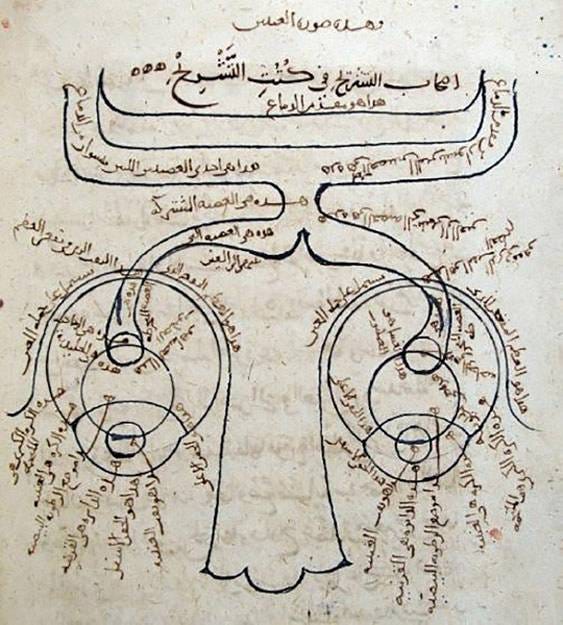(3 minute read)
“They spoke of Alhazen and Vitello
And Aristotle, who wrote, in their lives,
On mirrors strange and on perspectives,
As all they who’ve read their published word know.”
(The Squire’s Tale from Canterbury Tales)
Abū ʿAlī al-Ḥasan ibn al-Ḥasan ibn al-Haytham (Alhazen or Alhacen) was a Muslim polymath born in Baṣra in the latter half of the 10th century (CE). He excelled in a variety of disciplines including physics, mathematics, and astronomy. A prolific author, his works influenced Witelo, Galilei Galileo, Johannes Kepler, René Descartes and Isaac Newton, just to name a few.
Arguably, his biggest contributions are to the field of optics. Before Ibn al-Haytham, there was no distinction between the eye, light and vision; but through his extensive experimentation and efforts in optics, he separated the concepts of vision from light. In his magnum opus, Kitāb al-Manāẓir(Book of Optics), he correctly identified that vision was a process that occurred in the brain and he discussed the structure of the human eye at length. Just as importantly, he disproved long held views that vision was based on light emitted from the eye traveling to an object and back to the eye (extromission). Instead, he determined that vision was achieved when light from an object traveled to the eye (intramission).
Ibn al-Haytham’s detailed diagram of the human eye (Kitāb al-Manāẓir, Süleymaniye Library).
Using observations from his experimental chamber al-bayt al-muẓlim (dark house), Ibn al-Haytham provided the first clear description of the camera obscura (light passing through a small hole in a dark box/chamber projects an inverted image of what is outside of the box/chamber).
Depiction of Ibn al-Haytham’s observation of light passing through a pinhole (Nazif Beg). The object is on the right and the resulting inverted projection on the left.
Illustration demonstrating camera obscura and the formation of an inverted projection (Camera Obscura and World of Illusions).
In his work On the Shape of the Eclipse, he employed the camera obscura to study a partial solar eclipse. In doing so, not only did he provide a safer technique allowing more people to study partial solar eclipses, but also a deeper understanding of the camera obscura itself (note: the term camera obscura is the Latin translation of al-bayt al-muẓlim, a precursor to the modern-day camera).
Ibn al-Haytham’s studies of celestial bodies also included tackling the moon illusion: though the size of the moon is not really changing, it appears much larger when low on the horizon compared to when higher in the sky! He was the first to plausibly explain the optical illusion using the apparent-distance theory. Due to intervening objects (buildings, trees,etc.) when the moon is low on the horizon, the brain is tricked in how it correlates size and distance, perceiving the moon as larger. However, when the moon is high in the sky, there are no intervening objects to disrupt our visual cues.
Full moon low on the horizon (Dark Sky Diary)
Considered by many to be the world’s “first true scientist”, Ibn al-Haytham’s legacy lives on, spreading far and wide: from Geoffrey Chaucer’s Canterbury Tales to an asteroid bearing his name.





Ibn al-Haytham's contributions to optics were truely groundbreaking. His rejection of the emissi theory in favor of intromission was revolutionary for his time. What stikes me most is how his work bridged empirical observation with rigorous mathematical analysis, somthing that wouldn't become common in Europe until centuries later. The fact that figures like Kepler and Newton built on his foundatons speaks volumes about the depth of his work.